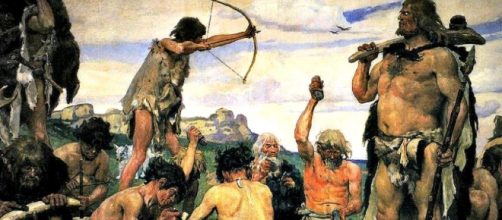The human race has had a long history of lifestyle transition. Chief among them is the big leap from hunting-gathering to farming – one of mankind’s most significant milestones. Ancient humans were once used to harvesting food in the wild, and survived by fishing and hunting, but an incoming progress arrived in the form of farming, and from Western Asia, quickly spread across Europe and to other parts of the globe. It’s widely regarded by modern people as a welcome change. However, the sudden lifestyle revolution courts the question: What happened when hunter-gatherers first encountered the farmers?
Early humans weren’t exactly split into two societies
Ancient farmers and hunter-gatherers may have had a much deeper relationship than previously assumed, according to a recently published study in the journal Current Biology. Researchers at the University of Potsdam in Germany revealed DNA evidence suggesting the two very different communities actually lived side by side, had Sexual Relationships and eventually bore children.
The team of scientists, spearheaded by Gloria Gonzales-Fortes, analyzed the genomes of four individuals who lived in what is now Romania’s Danube River basin between 8,800 and 5,400 years ago. What they found out will completely change our views regarding the two societies – they may have lived together and produced children in spite of huge cultural differences.
The evidence adds complexities to the time immemorial debate regarding the Neolithic transition – on how early human beings made the switch from hunting and gathering into farming. The argument imposes two different concepts, whether it was the movement of ideas or movement of people that started the crossover.
A more nuanced picture of how farming spread across Europe
What’s known to most is that farmers from Anatolia eventually outcompeted local hunter-gatherers, which resulted to the latter dying out. Another study also suggested that hunter-gatherers weren’t exactly taken over by farmers – rather, they simply adopted farming.
The reason why Gonzales-Fortes and her team of international scientist’s study is so important is because it has shaken what the whole world is accustomed to knowing.
What resulted from the genetic analysis is that one individual dated to 5,300 years ago, turned to be 60 percent hunter-gatherer and 40 percent Anatolian farmer. To put it bluntly, our ancient ancestors didn’t just co-exist to swap ideas or trade objects – they actually had sex, had kids, and this went on for generations.
Although the results provide evidence for admixture between these communities, it’s still unclear whether it resulted from the incoming farmers establishing their own communities into which the hunter-gatherers mixed or from small numbers of farmers joining existing hunter-gatherer communities.
“We were fascinated by the high levels of integration between the two communities as reconstructed from our ancient DNA data,” said Michael Hofreiter, one of the paper’s authors.


